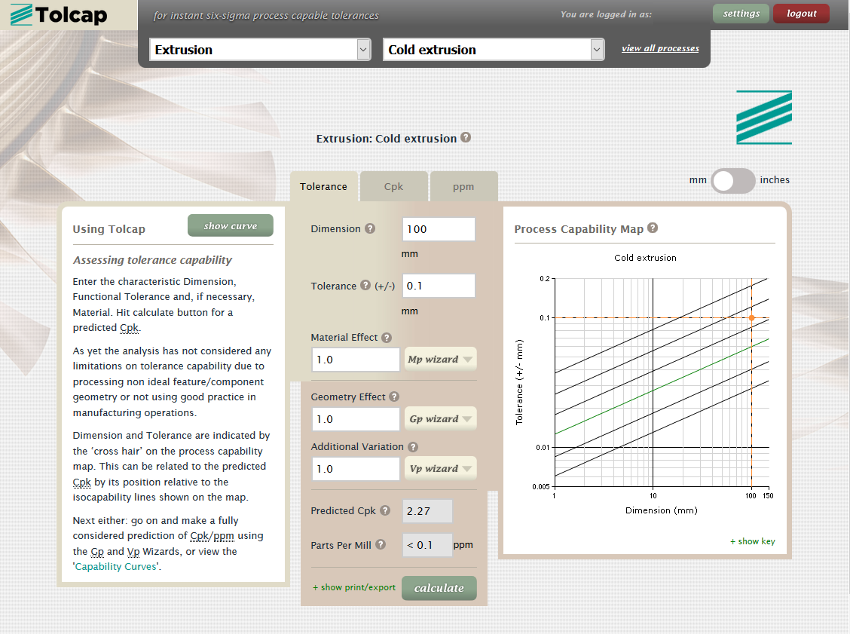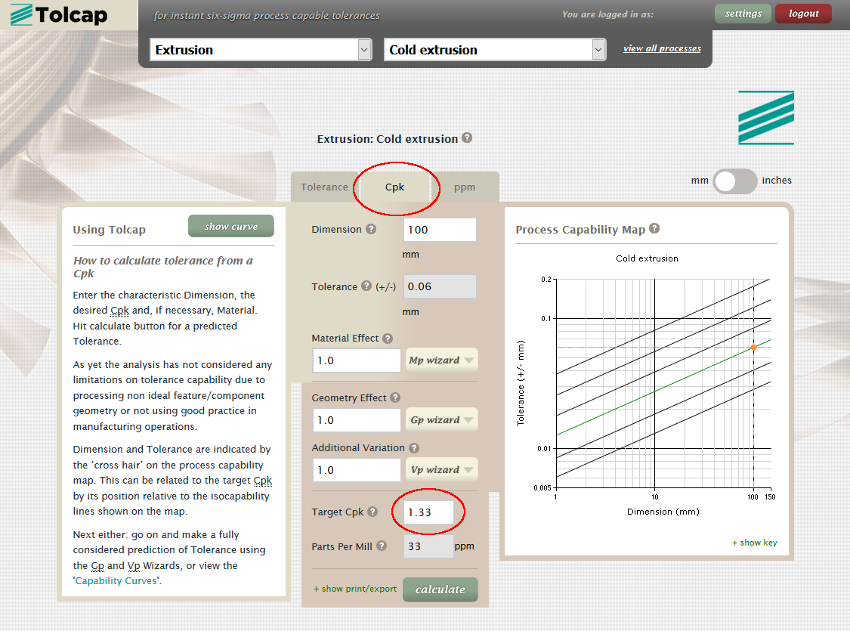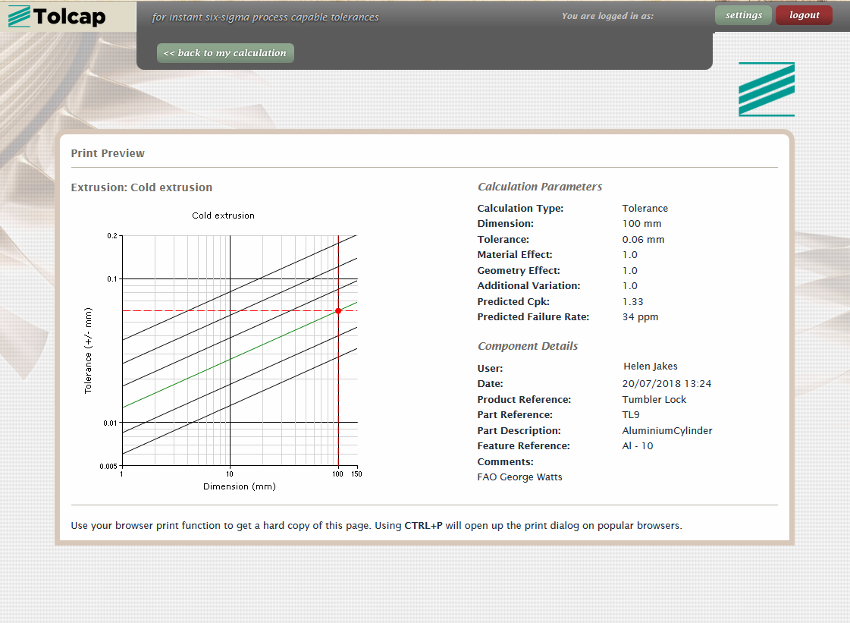We received feedback from a trial account holder that it can be cumbersome to have to ‘reset’ each time for a different feature. What he meant was that the process of analysing a part: selecting the process map, entering the dimension and tolerance, and applying the material, geometry and additional variation wizards - can get repetitive.

Well, that’s true - that’s how Tolcap currently works
see Notes.
Bear in mind that some forethought can greatly simplify your Tolcap input.
Assess the part as a whole before you start.
The part may be manufactured by a series of processes: which of the dimensions of interest are finalised by which process?
Do the analysis by this grouping to avoid switching between process maps too often.
It can happen but it’s unusual to get different materials in the one part, but that’s the next sub-grouping.
Then look at dimensions where the same geometric and additional variation factors will apply.
You may not get everything right, but it will cut down the process.
Next look for the worst case.
Which are the features likely to get the worst wizard scores?
Of these features, try the one with the tightest tolerance and, if there’s more than one, the one with the largest dimension.
Analyse that.
If it’s capable, you know smaller dimensions with that tolerance are going to be capable, and you know a lot of the wider tolerances will be OK
- you may have to check if the dimension is even bigger than the one you checked.
You also know that features which will score more favourably on the wizards will be good, provided they lie within the limits of dimension
- tolerance features you already accepted.
Another short cut is to click the Cpk tab and predict tolerance rather than process capability.
You will have a target Cpk - we default to 1.33, but you may wish to ‘design for six sigma’ for example
and require Cpk = 1.5.
Whatever the target, set that once, and thereafter you just need to enter the dimension and Tolcap will tell you what is achievable.
Compare that with the tolerance specified and you have your answer.

All the above applies if you are analysing a drawing.
This may be the job, if you are a quality engineer, or you are studying an existing part.
But for a designer, the best way to use Tolcap is right from the concept stage: as soon as you are sketching an idea,
you will be aware of the important features.
You will have some idea of the dimensions and required tolerances of these features, and a feel for the material and shape of the part.
Now is the time to think how the part will be produced and check if there may be capability problems.
Find out now and take action, before a non-capable feature gets built into your mindset and the product:
it may be the one that comes back to haunt you for years!
Remember a design is an instruction to the supplier - it should be one he can follow capably.
Another time waster is to lose the scraps of paper on which you jotted down the analysis results - and have to do them again.
Tolcap gives you reporting capabilities.
In Tolcap, click ‘+ show print / export’ next to the ‘Calculate’ button.
A panel appears where you type product, part, feature references (many of which are common across the part, obviously).
Then ‘print preview’ gives you a map and detailed report on that particular feature, which you can print, and / or save to pdf,
so that you could then make a single pdf file of several such pages if you wanted:

Or, instead of ‘print preview’ you can click ‘export’ and get the data of the report in a single row .csv file.
As you analyse each dimension you can export it, then copy the rows in the individual export files, and paste them as successive rows in a single spreadsheet or table.
You then have the option to edit the table and add delete columns to generate a report as you want it.
see Note 2
So Tolcap embodies a systematic analysis of features on a part to provide reliable process capability predictions.
As with all systems a little planning and forethought will greatly improve your process efficiency and effectiveness.
We are delighted to report that our trial holder is now fully signed up Tolcap user.
We hope you will also find these few tips helpful.
Written by:

Richard Batchelor MA, MBA, CEng, FIEE
Richard is a founding member of the Capra Technology team.
Development Notes:
Tolcap is currently undergoing major upgrades and modernization. Planned features for the new versions include:
- Improved interface with variable screen size allowing you to use Tolcap on your mobile devices and tablets.
- The ability to store, annotate and reuse Tolcap calculations.
- The ability to perform stack calculations on saved components.